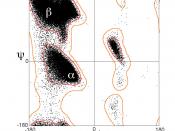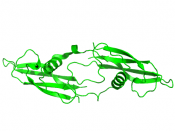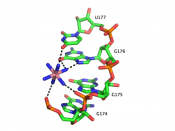Chetna Patel, SID # 64283 December 15, 2013 GED102 The Human Body
Unit 1
Explain why a denatured protein no longer functions.
Why does a denatured protein no longer function? This usually occurs when a protein's structure is destroyed. They are no longer able to perform its physiological role. Each protein's function depends on a specific structure. Proteins are folded in a particular way and once disrupted denaturation is in effect. Heat, enzymes, chemicals and excess of pH play a part in breaking down the important role of hydrogen bonds. Also, each protein has a specific shape and when it's not in its conformational shape, it is no longer able to provide its function.
A protein's tertiary structure is what determines its function. The primary structure is the amino acid sequence. Proteins fold and combine with other proteins to give it a secondary, tertiary and sometimes even a quaternary structure.
The additional levels of structure are important to the enzyme's functionality. The secondary level is regularly repeating local structure stabilized by hydrogen bonds. A common example of this is the alpha helix. However, because secondary structure is local, many regions of the secondary structure can be found in the same protein molecule. Tertiary structure is the overall shape of a protein molecule; the existing relationship between of the secondary structures to one another. This third structure is generally stabilized by nonlocal interactions including post translational modifications. The tertiary term is also known as the "folding". The tertiary structure is what controls the basic function of the protein. And last, you have the quaternary structure. This is when the structure is formed by different protein molecules, which functions as a single protein complex.
Denaturation is a process in which proteins or nucleic acids lose their tertiary structure and secondary structure by...


